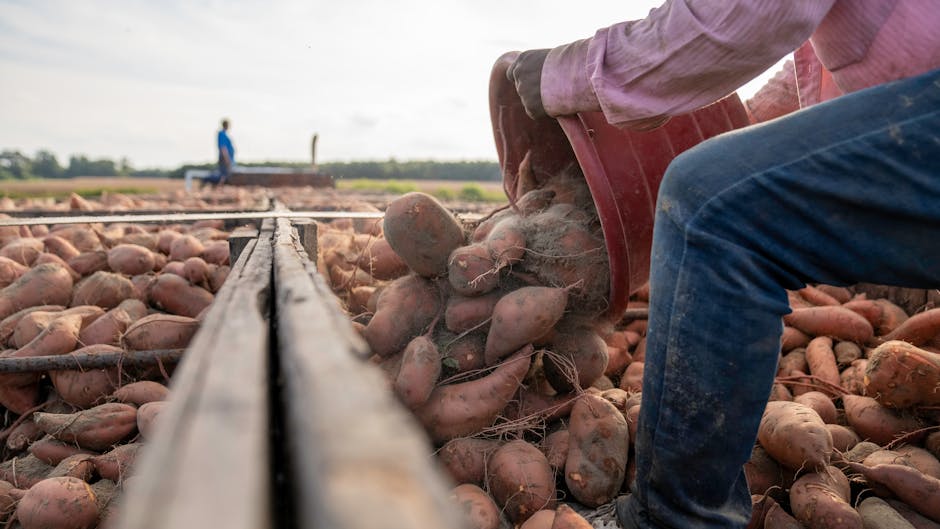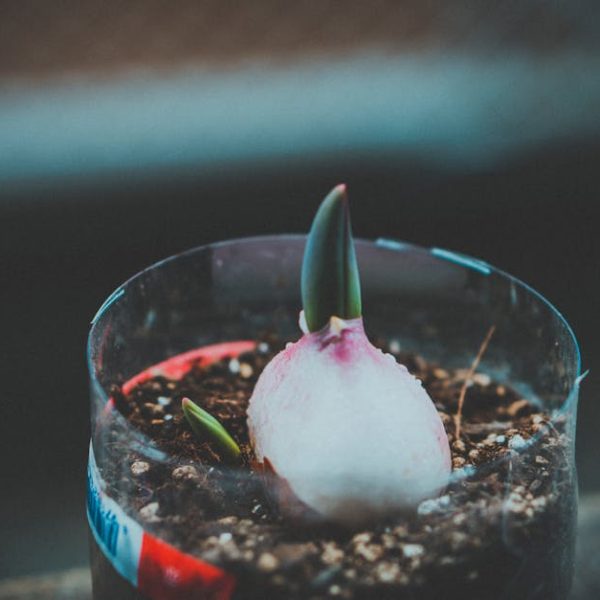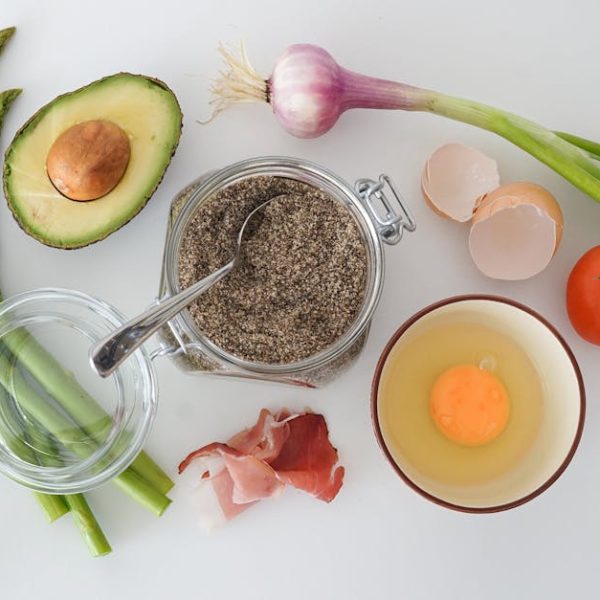Sweet potatoes are a versatile and nutrient-rich food, delicious in recipes ranging from sweet pies to savory stews. However, improper storage can shorten their shelf life and waste their potential. This article offers tips on effectively storing your sweet potatoes, ensuring they remain fresh and delicious for your consumption.
Properly Curing Sweet Potatoes Before Storage
Curing your sweet potatoes is a key step towards prolonging their shelf life. This process allows the skin to harden, creating a natural barrier against decay and spoilage. Additionally, curing can enhance the natural sweetness of the potatoes, giving them a richer flavor.
- To cure sweet potatoes, simply place them in a warm, humid environment for about a week. This can be achieved at home by placing them in a room maintained at a temperature of about 85°F (29°C), with approximately 90% humidity.
Pro Tip: If you don’t have access to a space of this warmth and humidity, another option is to place them in a plastic bag with holes punched for air flow, and keep at everyday room temperature.
Correct Storage Conditions for Sweet Potatoes
Once cured, sweet potatoes require specific storage conditions for optimal preservation. These include:
- Temperature: Sweet potatoes store best at temperatures between 55 and 60°F (13-16°C).
- Humidity: Ideal storage conditions are in a highly humid environment.
- Lighting: Keep sweet potatoes in a dark place to prevent sprouting and nutrient loss.
To prevent spoilage, make sure to also avoid these unfavorable conditions:
- Extreme temperatures
- Too much light
- High risk of pest infestation
There are pros and cons among different storage methods including pantry, fridge, or dehydrator. For instance, while a pantry may provide the necessary temperature and humidity but lacks control. A fridge is too cold and dry, while a dehydrator significantly reduces the storage time.
Importance of Storing Sweet Potatoes Individually
To reduce the risk of rot and extend shelf life, it’s crucial that you store sweet potatoes individually. Grouped storage can lead to moisture buildup, fostering an environment that encourages decay.
- Packaging each sweet potato in materials like newspaper, brown paper bags, or breathable cloth can help maintain their individual space.
- Storing individually also makes it easier to monitor for any signs of decay and remove affected sweet potatoes before they affect others.
Next, we’ll reveal some practices to avoid when storing sweet potatoes to prevent early decay.
The Don’ts of Storing Sweet Potatoes
There are several practices that could unintentionally corrupt your sweet potato’s quality if you’re not careful:
- Never store sweet potatoes near other fruits or vegetables, specifically those that emit ethylene gas like bananas and apples. This gas speeds up the ripening of nearby produce, potentially leading to early spoilage.
- Resist the temptation to wash sweet potatoes before storing them – this can introduce unnecessary moisture and potentially encourage mold growth.
- Lastly, avoid storing sweet potatoes in plastic bags, as the lack of ventilation can lead to decay.
Pro Tip: Keep an eye out for any signs of spoilage, such as soft spots, foul smell, or mold. It’s better to throw out a spoiled sweet potato than to risk the health of the others.
Tips for Long-Term Storage of Sweet Potatoes
Sometimes, you may find yourself with more sweet potatoes than you can consume in the short term. In such cases, consider the following long-term storage methods:
- Canning: This involves cooking the sweet potatoes and sealing them in jars. It requires a pressure canner and has a steep learning curve, but the result is shelf-stable sweet potatoes that you can enjoy anytime.
- Freezing: You can blanch and freeze sweet potatoes, which will keep them safe to eat for up to a year. However, the texture may change upon thawing.
- Dehydrating: By thinly slicing and drying sweet potatoes, you can create sweet potato chips that last for months.
Here’s a comparison table of the various methods:
“`html
| Methods | Pros | Cons |
|---|---|---|
| Canning | Long shelf life without freezing or refrigeration needed. | Requires specialized equipment and knowledge. Alters texture and flavor. |
| Freezing | Retains most of the original flavor and nutrition. | Requires freezer space and may alter texture upon thawing. |
| Dehydrating | Creates a tasty, long-lasting snack. | Takes a long time and might reduce certain nutrients. |
“`
Remember, no matter the long-term storage method chosen, ensure you thoroughly clean your sweet potatoes and remove any signs of decay before proceeding. This way, you help ensure your sweet potatoes remain delicious and safe to eat whenever you decide to use them. Proper storage can make all the difference in keeping your sweet potatoes fresh and full of flavor. Happy storing!
Key Takeaway:
- Curing sweet potatoes is vital before storage to harden the skin and create a natural barrier against decay. This also enhances their natural sweetness.
- Optimal storage conditions for sweet potatoes include temperatures between 55 and 60°F, a highly humid environment, and darkness to prevent sprouting and nutrient loss.
- Individual storage reduces the risk of rot and extends shelf life. Use materials like newspaper, brown paper, or breathable cloth for packaging each sweet potato.
- Avoid practices that can corrupt the quality of sweet potatoes, such as storing them near other fruits that emit ethylene gas and washing them before storage.
- Consider long-term storage methods like canning, freezing, and dehydrating when you have more sweet potatoes than you can consume in the short term.
Storing sweet potatoes might seem like a simple task, but it requires the right knowledge to maintain their freshness and taste. By following these practical tips, you can avoid wastage and enjoy sweet potatoes at their best. Savour the sweet part of life, with properly stored sweet potatoes!
FAQs
Q: Is it safe to eat sweet potatoes that have sprouted?
A: Generally, sprouted potatoes are safe to eat as long as they are still firm and the sprouts are removed before consumption. However, if the sweet potato is soft or has a foul smell, it’s best to discard it.
Q: Can sweet potatoes be frozen raw?
A: It’s not recommended to freeze raw sweet potatoes as this can lead to a change in texture and taste. Blanching sweet potatoes before freezing can help maintain their quality.
Q: What is the shelf life of canned sweet potatoes?
A: Properly stored, canned sweet potatoes can last up to 1-2 years or beyond in cool, dark storage.
Q: Why should sweet potatoes be stored in a dark place?
A: Light exposure can cause sweet potatoes to sprout and lose nutrients.
Q: Is it necessary to peel sweet potatoes before long-term storage?
A: Peeling sweet potatoes is not necessary before long-term storage. The skin acts as a protective barrier against decay. Peeling should be done just before using the sweet potatoes.
Please feel free to share this article and explore more posts on our website.






